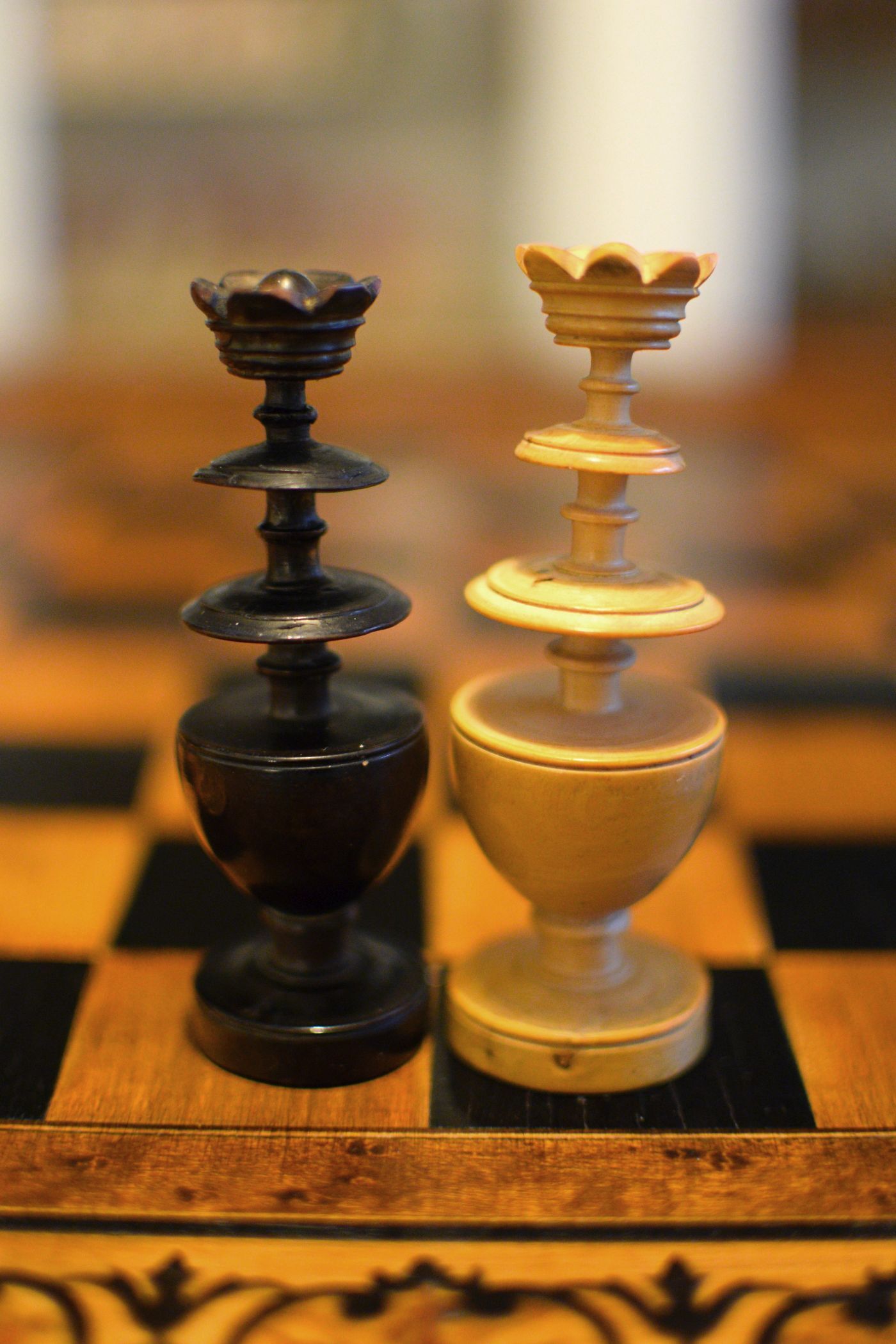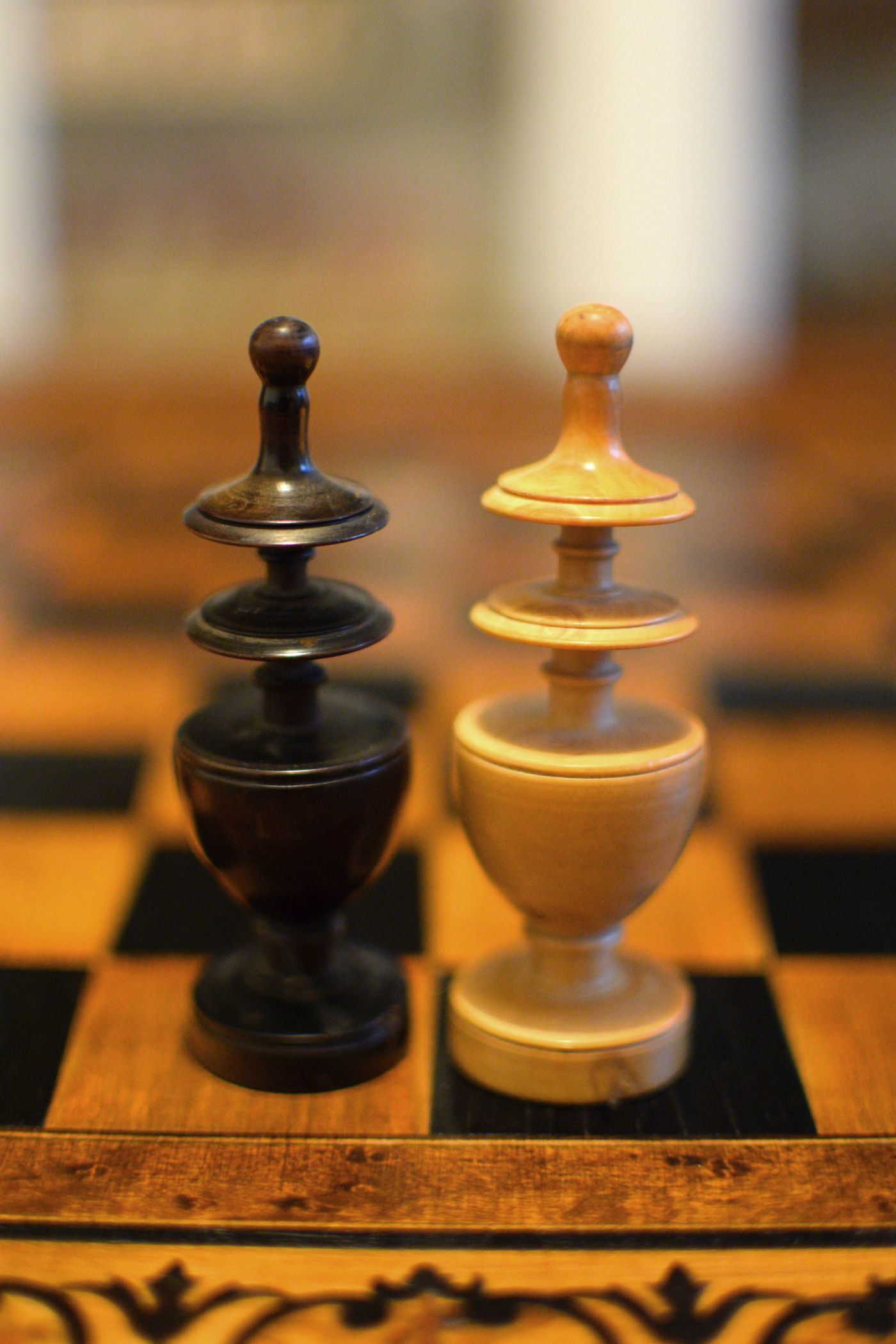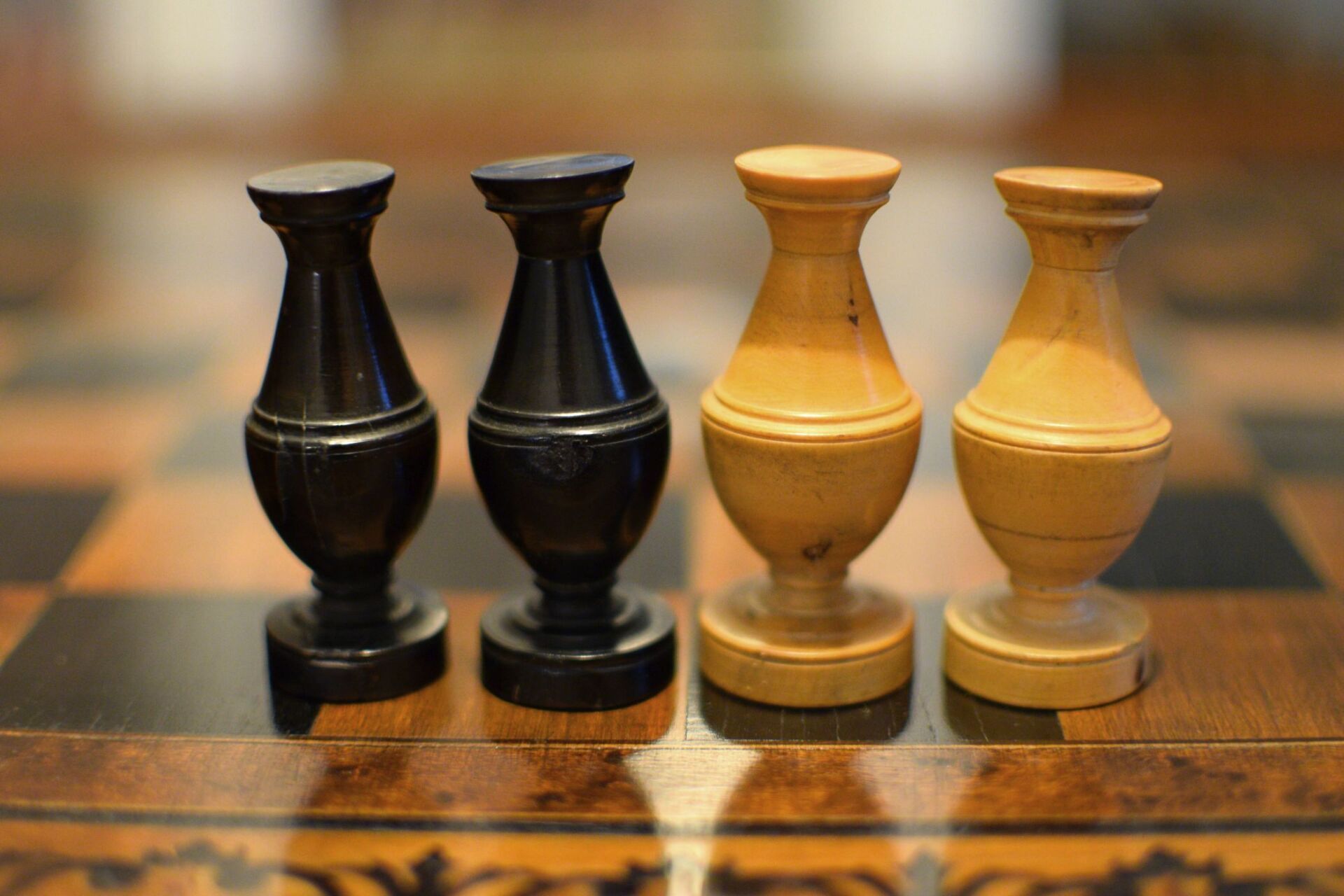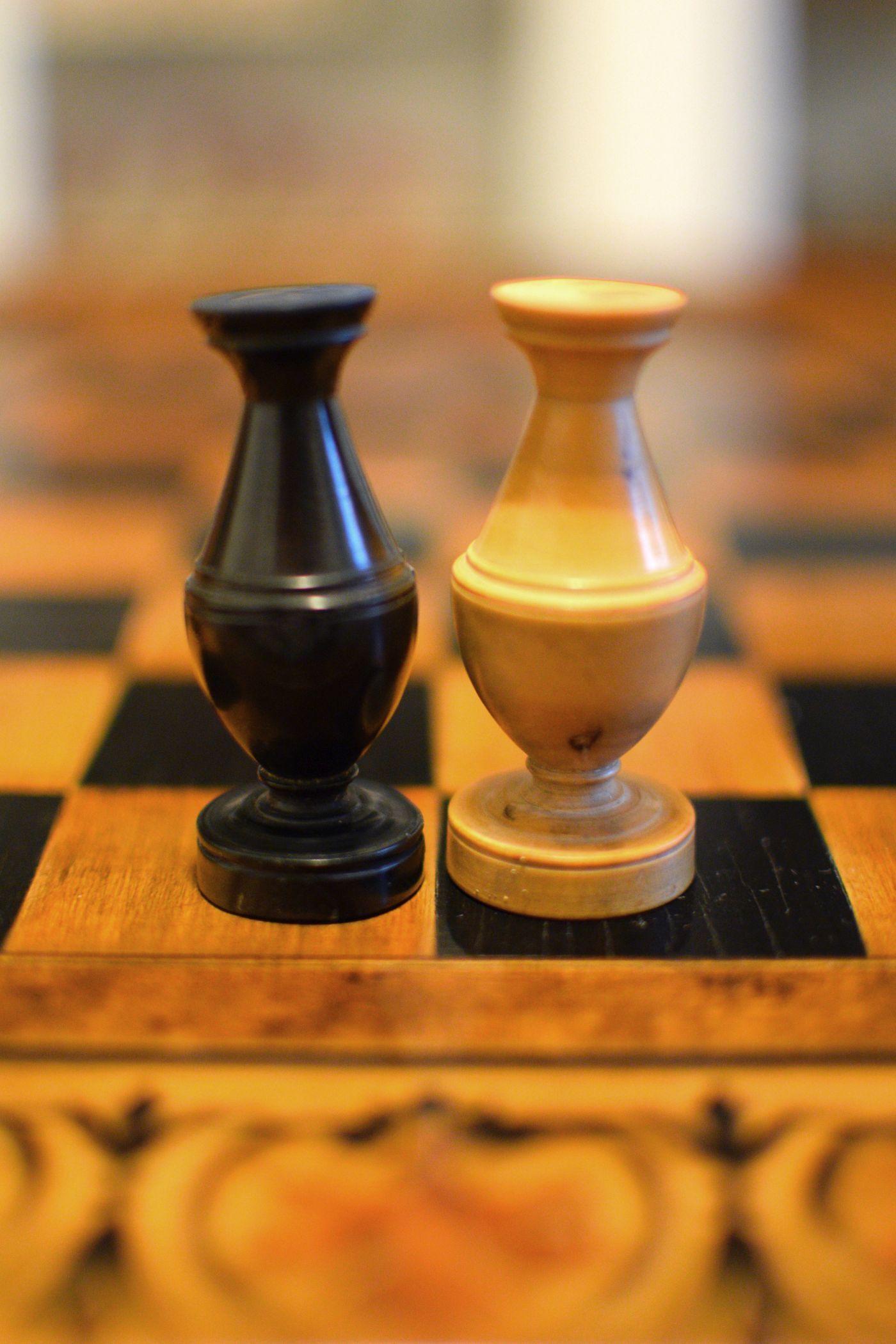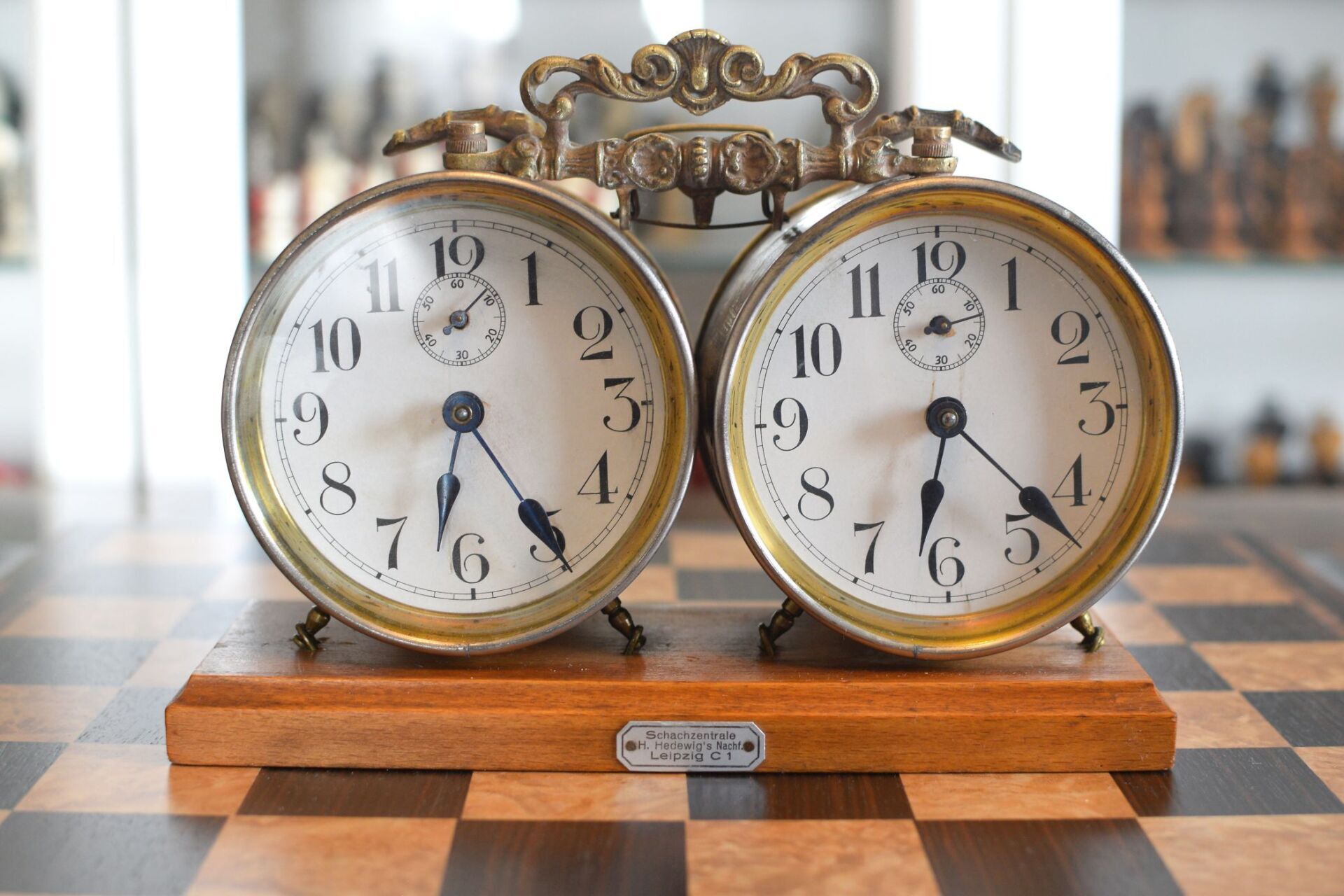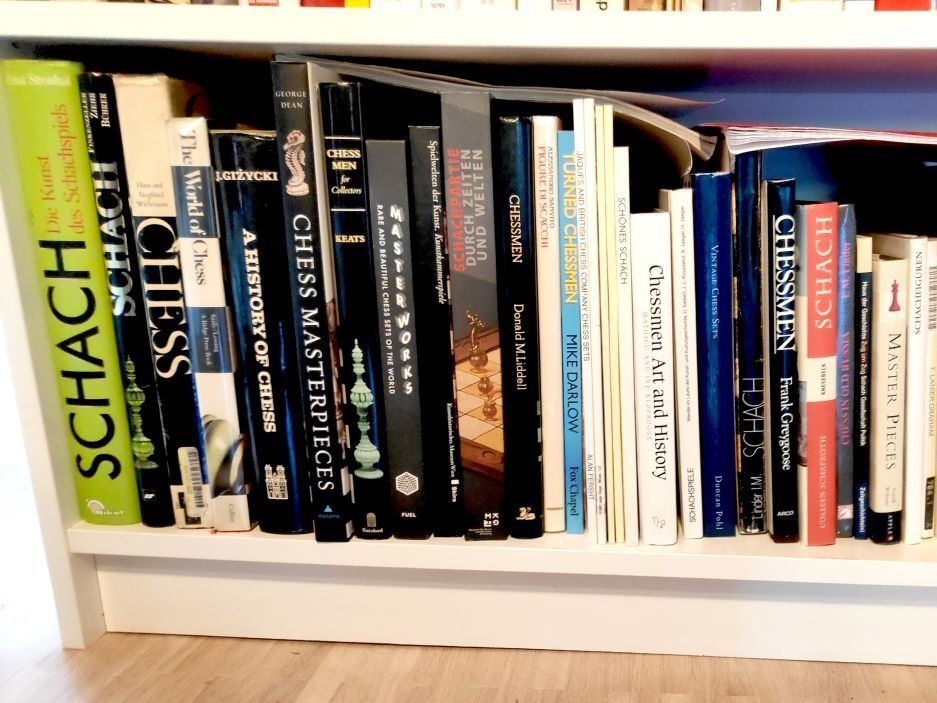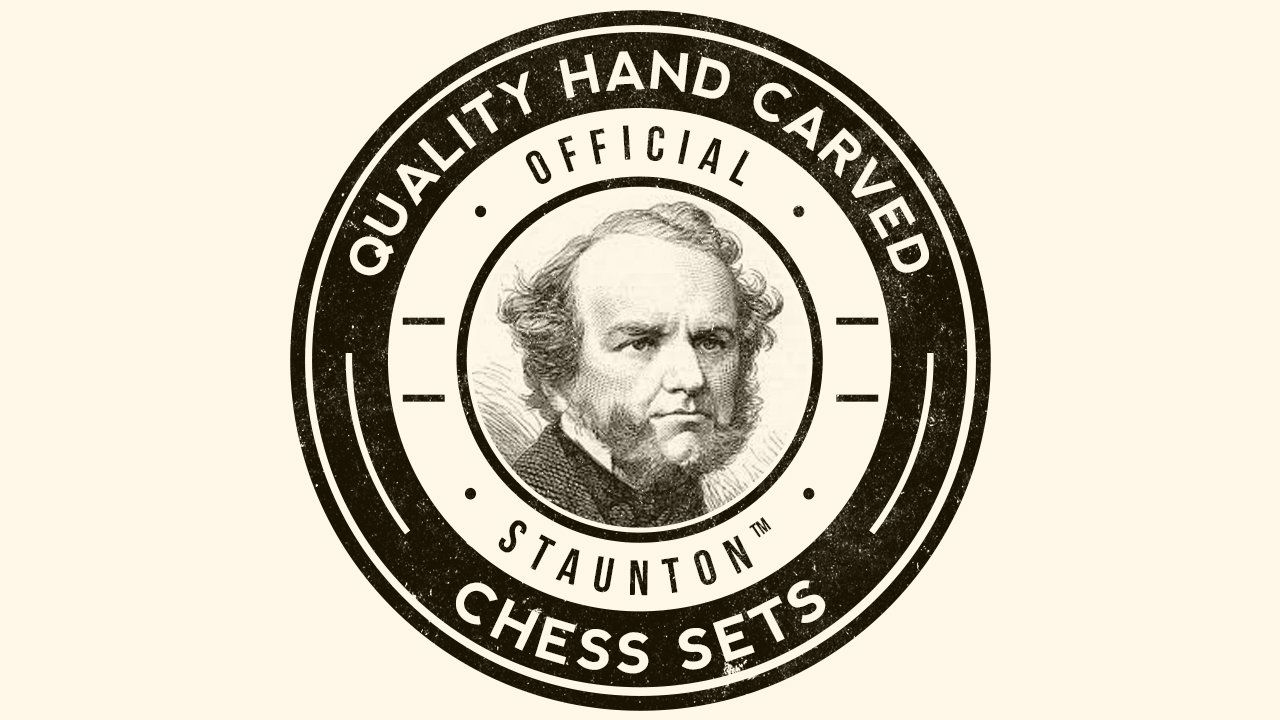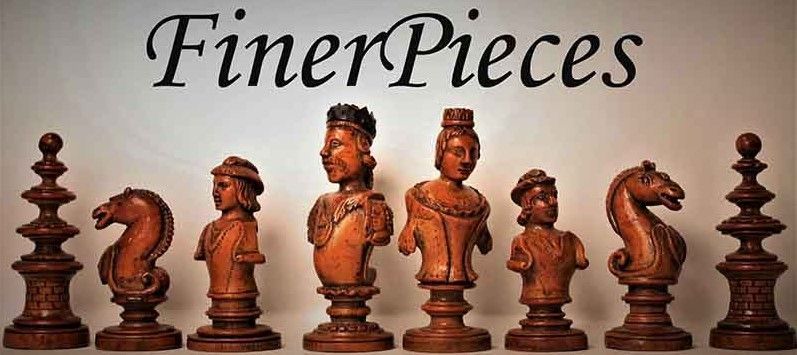French Régence Chess Set, ca. 1780-1820
A French chess set made in the "Régence" pattern, named after the famous Café de la Régence in Paris. The pieces are turned from boxwood, one side stained in dark brown, most likely made in the late 18th or early 19th century in the St. Claude region (Jura) in France. Some pieces with the "lean" not untypical for French boxwood pieces. King size is 86 mm. The Kings and Queens with urn shaped bases and circular collars on a slim stem, the Kings with a finely carved "Tulip Crown", typical for this type of set, the Queen with bulb top finials. The Rooks as rather unusual baluster shaped towers on a circular pedestal. The Knights and Bishops with spherical bases on a small circular pedestal. The Knights extremely tall and with a height of 90mm taller than the kings. The Bishops with bulb top finials and circular collars, parts of which were traditionally cut out, allegedly to symbolize the waning influence of the clergy due to the Enlightenment (cf. Kloprogge, Chessmen - Art and History, p. 101). The Pawns with slim stems on broad bases and bulb top finials.
The Café de la Régence was the center of chess in ancient Paris. The café was founded in 1681 as one of the first coffee houses in Paris under the name Café de la Place du Palais-Royal. It was located between the Rue Saint-Honoré and the Place du Palais-Royal. It was renamed Café de la Régence in 1715 at the earliest, as the new name referred to the era of the regency (La Régence), which lasted from 1715 to 1723, when the Duke of Orléans ruled over the young king Louis XV, who was still a minor. The Café de la Régence attracted players like Voltaire, Rousseau, Stamma and Philidor, Ben Franklin, Robespierre, Napoleon, Harrwitz and Morphy.






